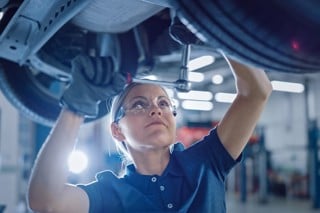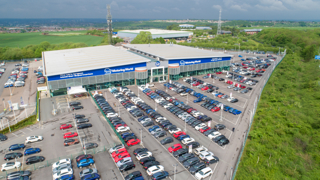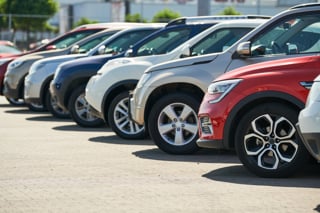By 2006 carmakers will need to have collection networks to take back their own models, when they reach the end of their lives. On top of that they will have to ensure that value is recovered from 85% of the weight of the ELV, which will rise to 95% from 2015. By 2007 manufacturers will also have to provide free ‘take-back’ to last owners who present their ELV for scrapping at collection sites.
Free take-back schemes
Ford has already confirmed that it will be offering free take-back for unwanted cars – including Mazda, Jaguar, Aston Martin, Volvo and Land Rover – when the directive comes into force in 2007, and recently signed an agreement with Cartakeback to provide a nationwide service. The Ford commitment will also include so called ‘negative value’ vehicles, where the cost of dismantling is higher than the value of the vehicle.
It now appears other manufacturers will follow suit. MG Rover has also called on Cartakeback to meet its long-term compliance with the regulations. Like Ford, all MG Rovers – including Austin, Morris, Triumph, Wolseley, Riley and original Mini – will qualify for free-take back through the network from 2007.
But the impact of ELV on the parts industry is less clear. In theory it should mean more recycled and remanufactured parts coming into the market, but these wouldn’t necessarily rival traditional OE and aftermarket parts as ELVs are usually older vehicles, often at least 10 years old. Subsequently any parts from these cars are only going to find a limited market.
The regulations do raise some interesting points about the lack of recycled and remanufactured parts in the UK.
“The industry generally does not appreciate the quality of remanufactured parts despite the fact they achieve the same quality and durability of original equipment and are sometimes even better,” says Brian Spratt, chief executive of the Automotive Distribution Federation (ADF).
“Only market perception will determine how well remanufactured parts can perform. There is clearly a price advantage and the availability is as good and often better than OE parts. Most of the factors and parts distributors already have a supplier of remanufactured parts for items such as rotating electrics but whether this will notably increase due to ELV remains to be seen.”
A preconceived idea of used parts appears to be one of the biggest hurdles to ELV parts. The difference between recycled and remanufactured is often unclear to the motorist, and if they aren’t happy with having remanufactured parts fitted, then the industry will never grow.
Green car insurance
“The public doesn’t seem to be aware that vehicle manufacturers don’t produce their own parts. They are only concerned that they come in a box with the manufac turers badge on the outside despite the fact that an identical part from the same factory may be available in a plain white box at a much cheaper price,” says Rob Hatfield, business development director for Universal Services, one of the largest vehicle services companies in Europe.
One system which has proved successful in increasing the use of recycled parts on the continent, is a ‘green’ car insurance policy, something which several insurers in the UK are considering.
A ‘green’ policy reserves the right for the insurer to use recycled parts to carry out repairs. At around 10-20% cheaper, it has proved popular, particularly among owners of ageing cars which would be declared write offs if OE parts had to be used for accident repairs.
“In Holland they have offered green policies for around five years and it is the fastest growing policy in the country,” says Ian Gaskin, former Universal Salvage director and now consultant for new automotive dismantling company, Autogreen.
“It is so popular in fact, that insurers struggle to find enough replacement parts so it’s clear that this is a growing area.”

















Login to comment
Comments
No comments have been made yet.